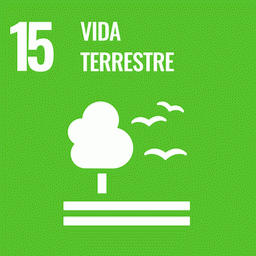Land use, land use change, and forestry accounted for two-thirds of Brazil’s greenhouse gas emissions profile in 2005. Amazon deforestation has declined by more than 80% over the past decade, yet Brazil’s forests extend beyond the Amazon biome. Rapid expansion of cropland in the neighboring Cerrado biome has the potential to undermine climate mitigation efforts if emissions from dry forest and woodland conversion negate some of the benefits of avoided Amazon deforestation. Here, we used satellite data on cropland expansion, forest cover, and vegetation carbon stocks to estimate annual gross forest carbon emissions from cropland expansion in the Cerrado biome. Nearly half of the Cerrado met Brazil’s definition of forest cover in 2000 (≥0.5 ha with ≥10% canopy cover). In areas of established crop production, conversion of both forest and non-forest Cerrado formations for cropland declined during 2003–2013. However, forest carbon emissions from cropland expansion increased over the past decade in Matopiba, a new frontier of agricultural production that includes portions of Maranhão, Tocantins, Piauí, and Bahia states. Gross carbon emissions from cropland expansion in the Cerrado averaged 16.28 Tg C yr−1 between 2003 and 2013, with forest-to-cropland conversion accounting for 29% of emissions. The fraction of forest carbon emissions from Matopiba was much higher; between 2010–2013, large-scale cropland conversion in Matopiba contributed 45% of total Cerrado forest carbon emissions. Carbon emissions from Cerrado-to-cropland transitions offset 5%–7% of the avoided emissions from reduced Amazon deforestation rates during 2011–2013. Comprehensive national estimates of forest carbon fluxes, including all biomes, are critical to detect cross-biome leakage within countries and achieve climate mitigation targets to reduce emissions from land use, land use change, and forestry.
Pegada de carbono dos gastos tributários
O livro apresenta três estudos e tem como objetivo contribuir para o debate em torno da "pegada" de carbono política tributária brasileira e para a formulação de incentivos econômicos ao desenvolvimento sustentável.
